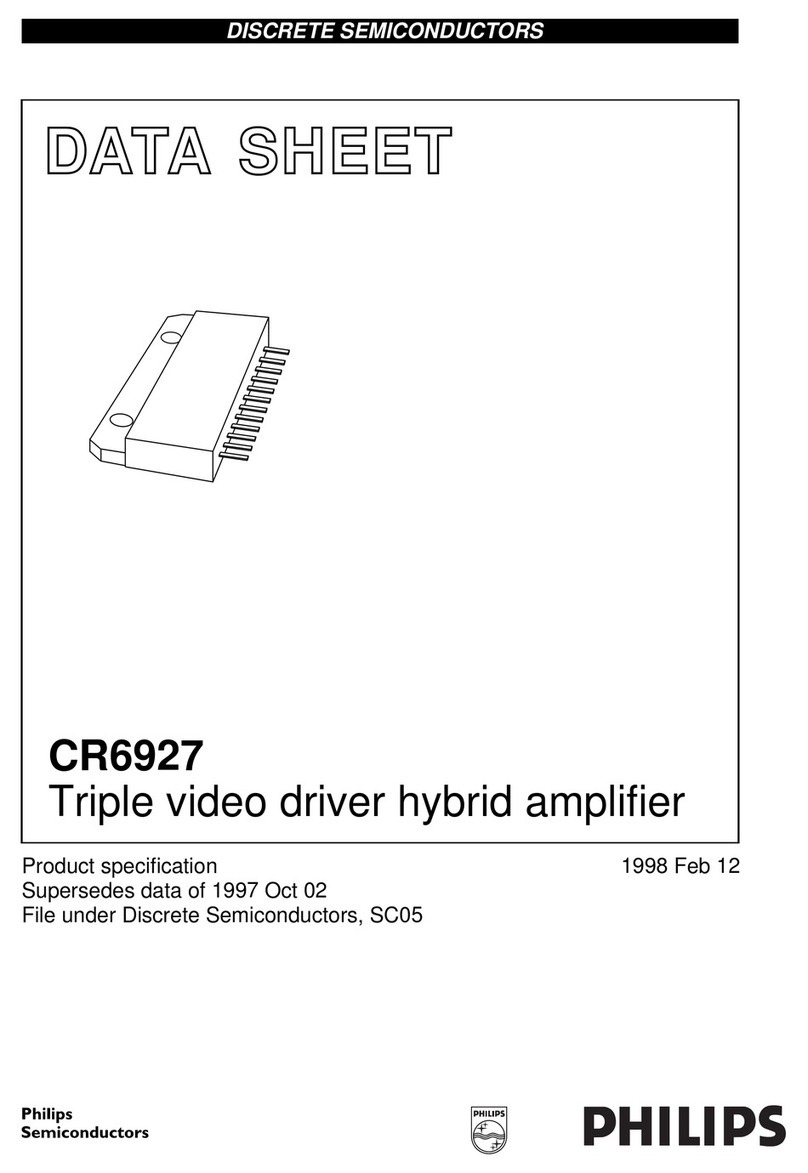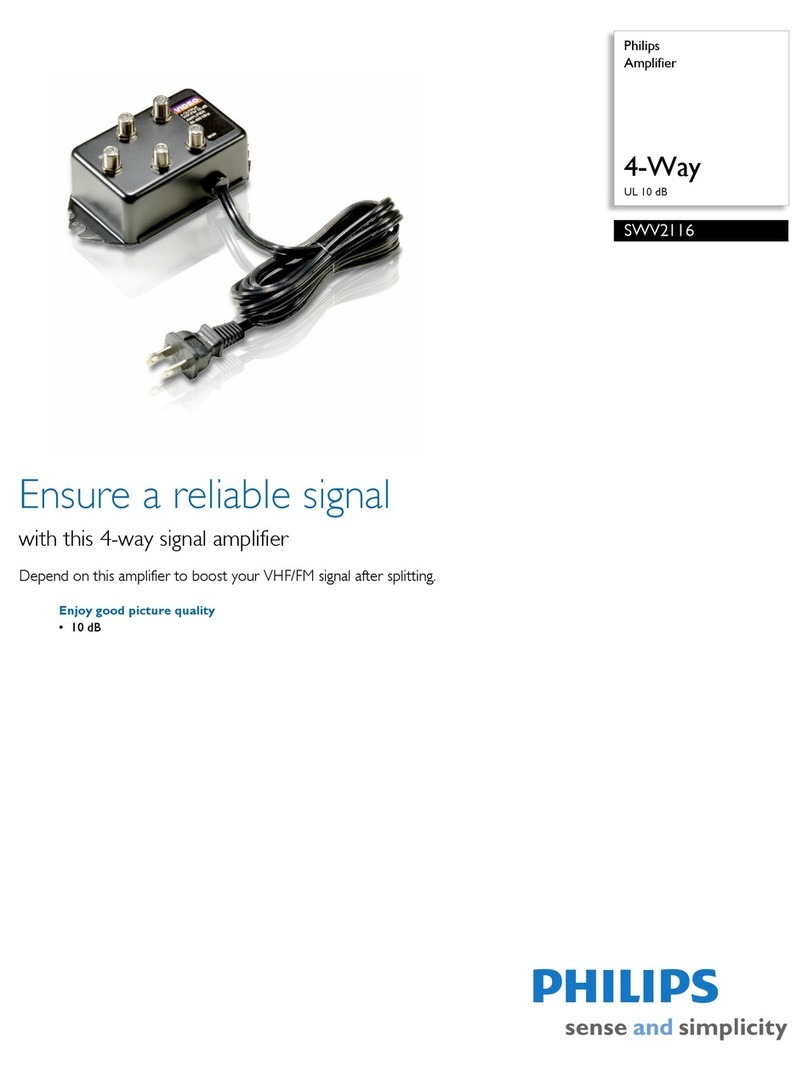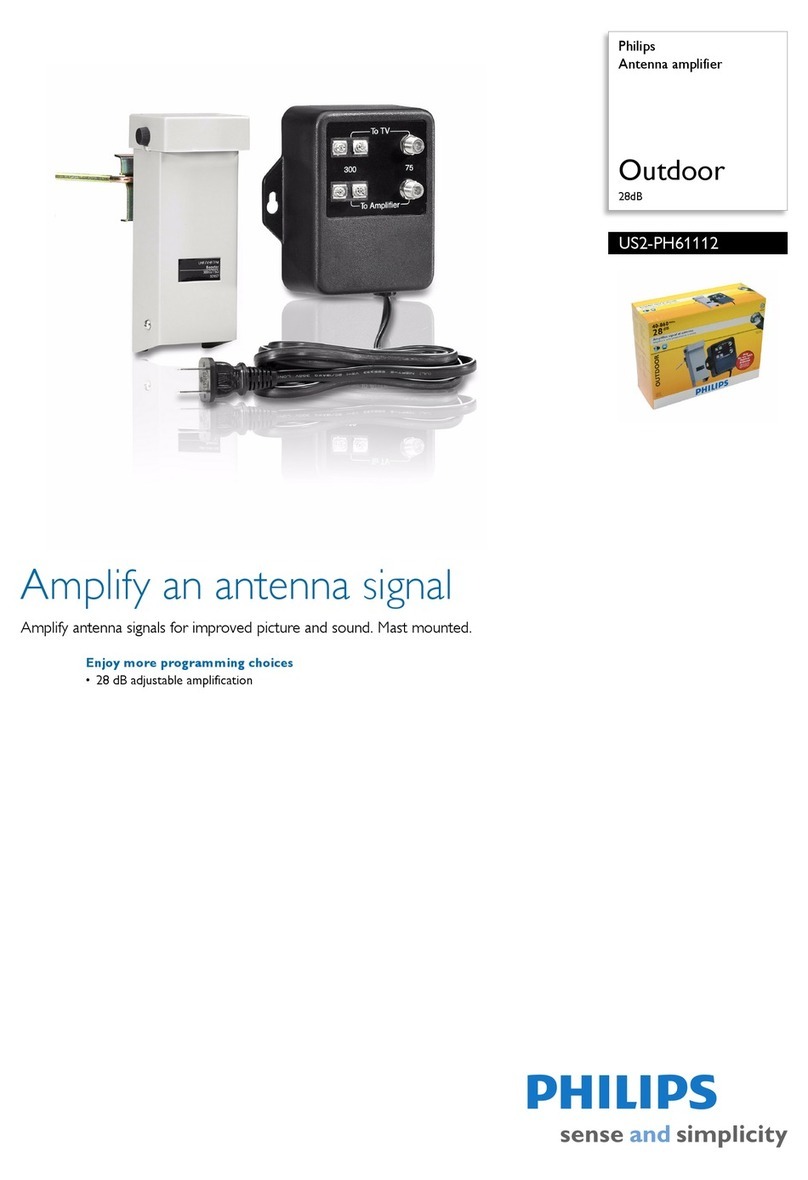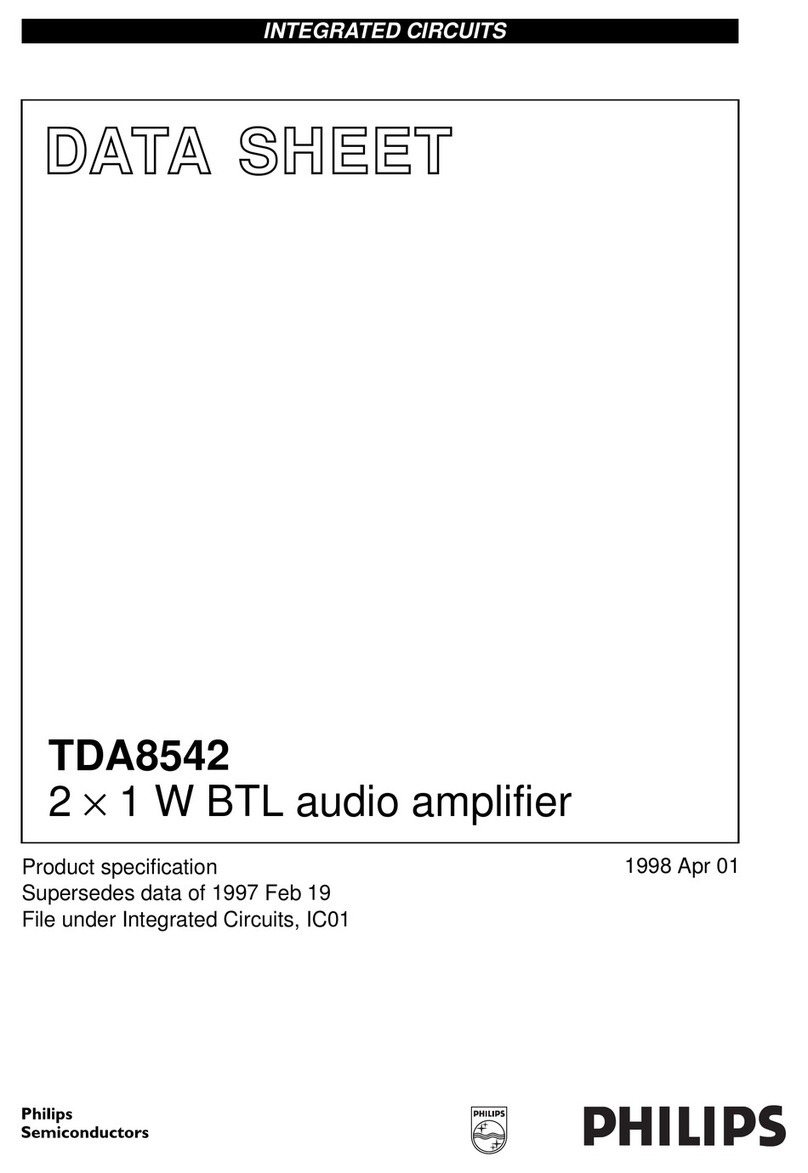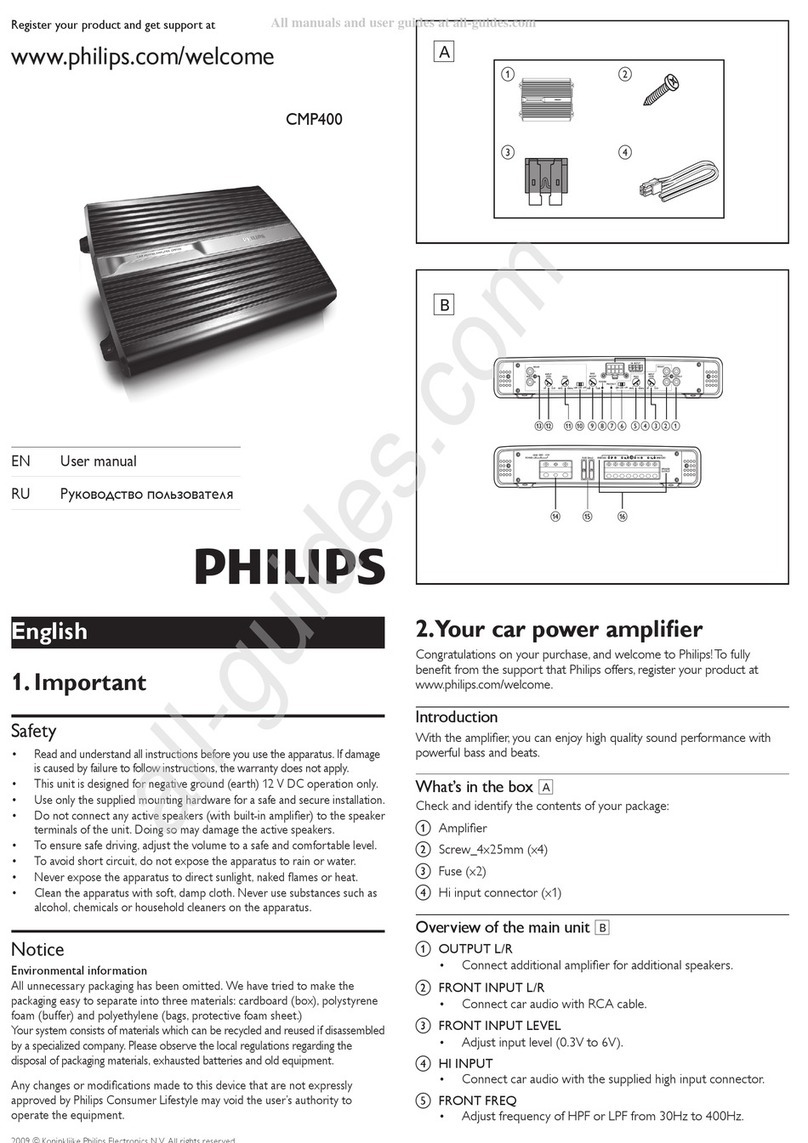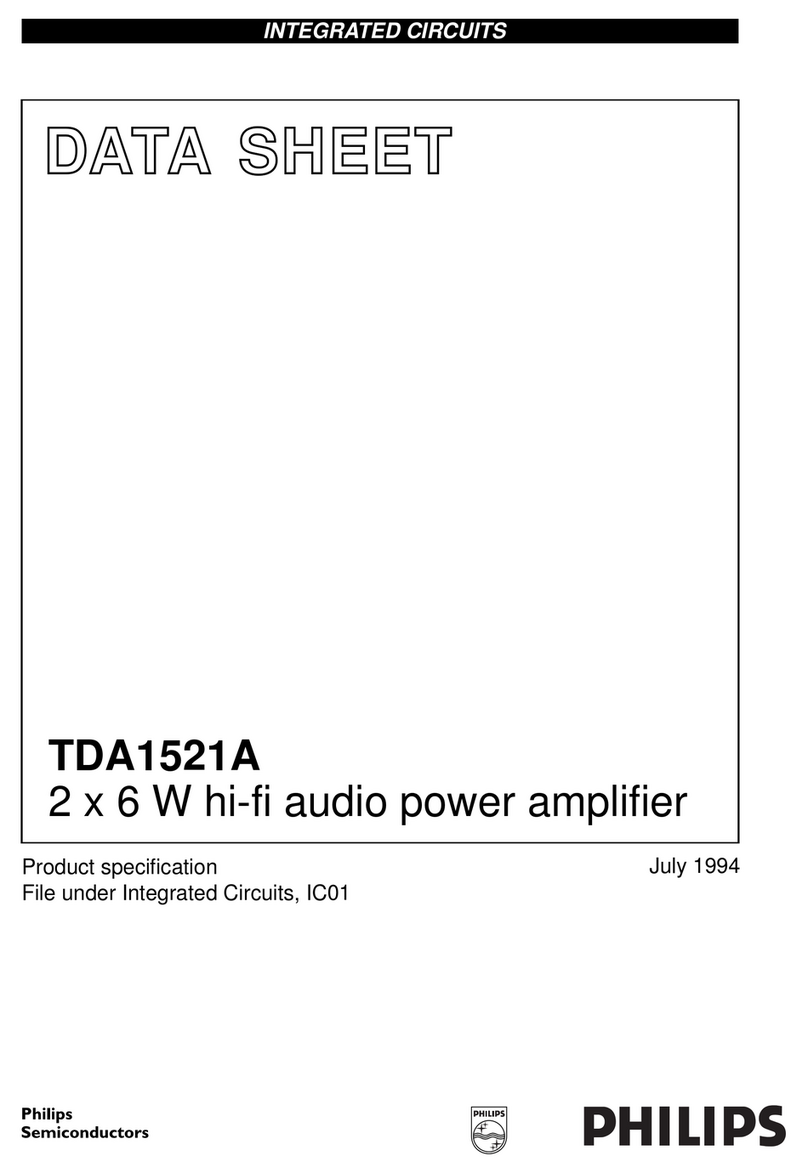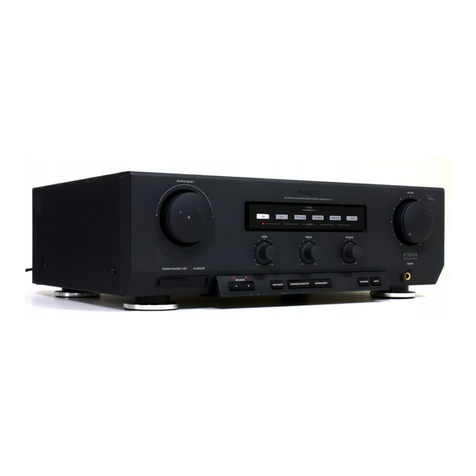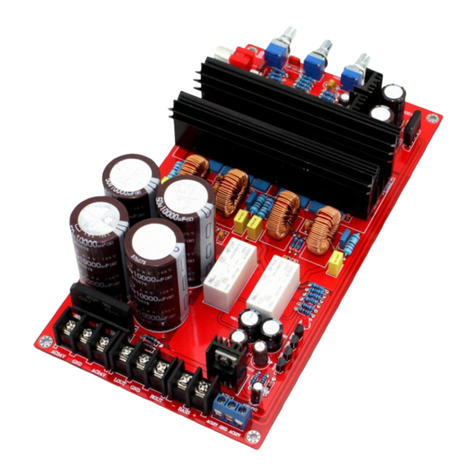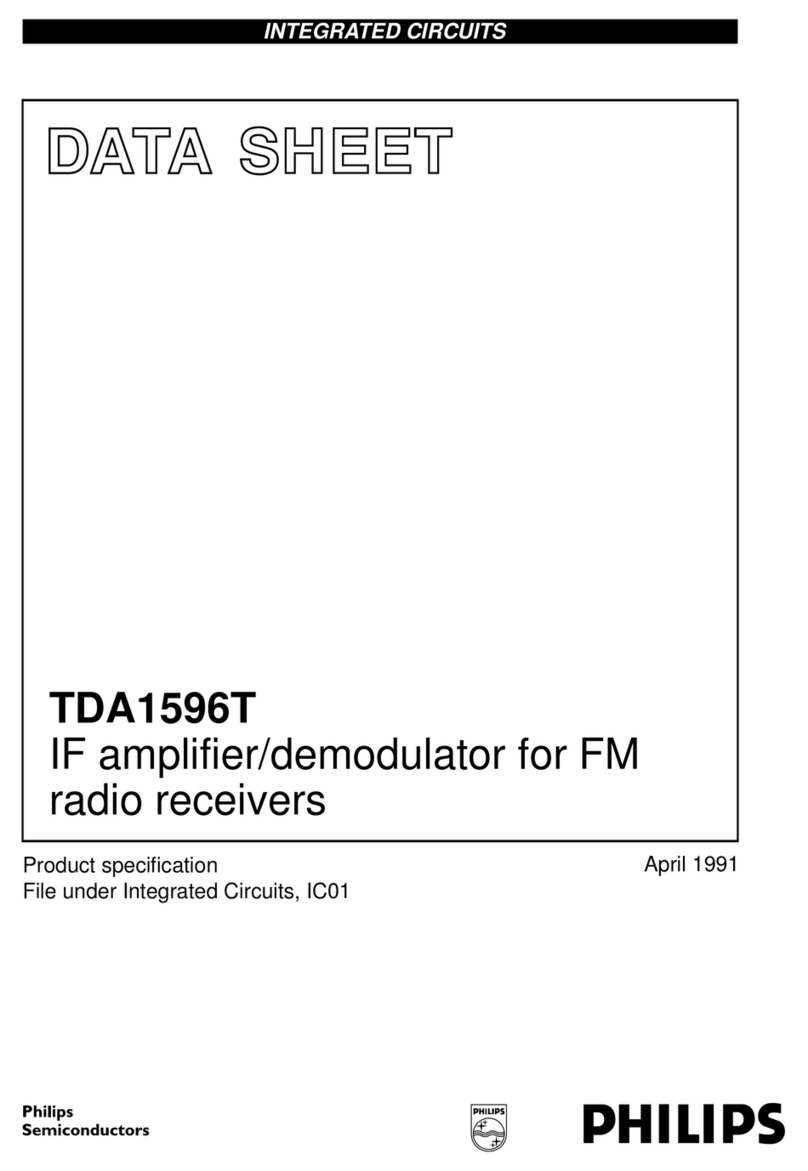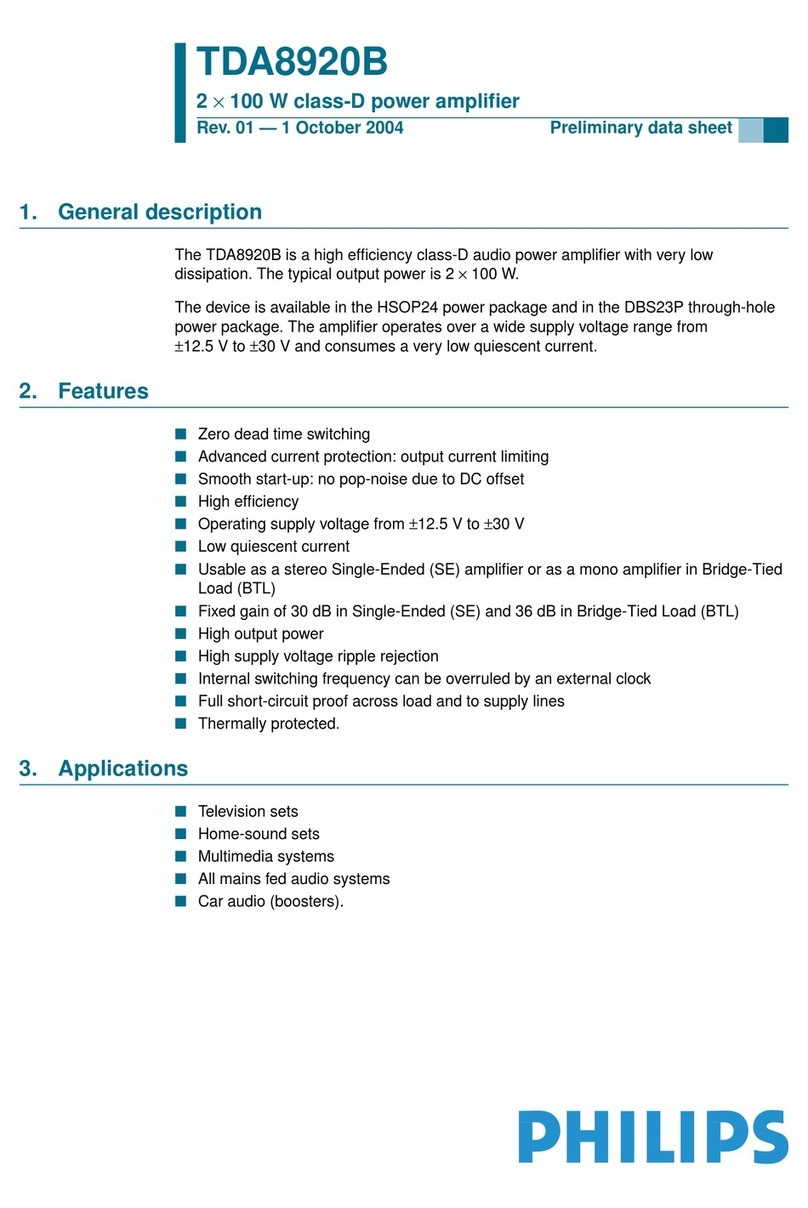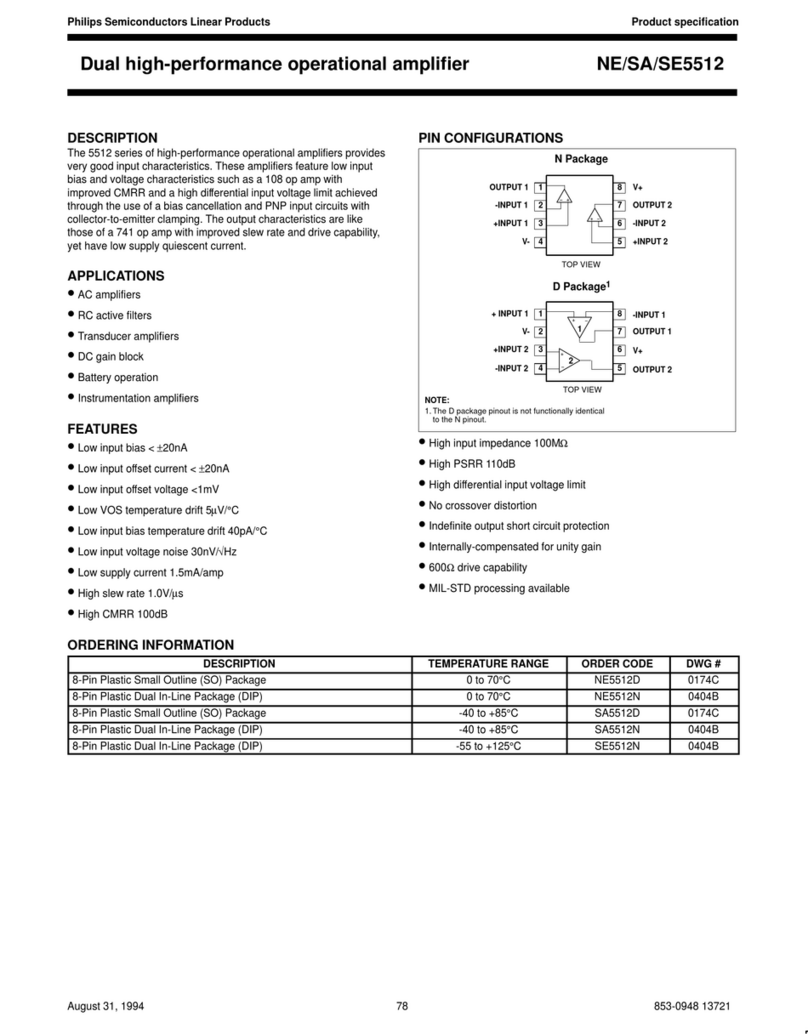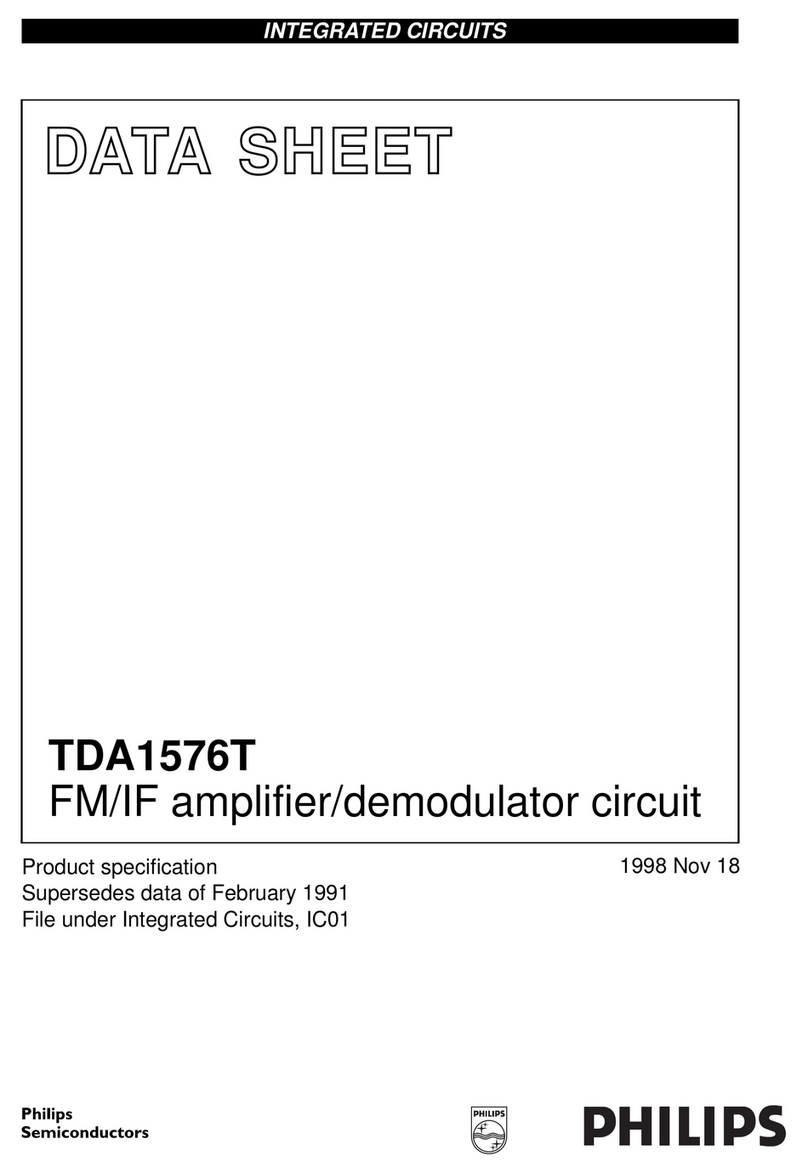
Diamond Line Amplifiers 10 July 2000 37
The main output test point
allows access to the return
band as well. You can’t
measure return signal here,
but you can inject return test
signals.
Main Output Test Point. The main output test point is a
-20dB directional coupler, which isolates the measured
forward signal from the effects of reflections in the cable.
Accessible through a cut-out in the module cover, this test
point lets you verify the forward signals at the main output
port (J2) without interrupting the amplifier’s operation.
Main Output Port (J2). The main output port, J2, routes
forward outgoing signal to a distribution cable. (This port also
routes incoming return signal to the amplifier.)
Secondary Path (after it splits from main path)
Secondary Output Attenuator. A 9-A-WC or 10-A-WC series
attenuator reduces signal levels at the secondary output port
(J3 or J4). A “zero” attenuator is shipped in this slot for circuit
continuity.
Secondary Output Post-Amplifier. The RF from this hybrid,
which uses Power Doubling technology, goes to the
secondary output port(s).
Secondary Output Port Selector. Accessible through a cut-out
in the module cover, the output port selector directs signal to
the secondary output port(s): J3 only, J4 only, or both J3 and
J4. A jumper, or “zero” attenuator, is used when directing
signal to only one port.When using both ports, this location
accepts a DC4-WC, DC8-WC, or DC12-WC directional
coupler plug-in.
Secondary Output Diplex Filter. See “Input Diplex Filter” on
page35.
A secondary output test point
allows access to the return
band as well. You can’t
measure return signal here,
but you can inject return test
signals.
Secondary Output Test Point. A secondary output test point is
a -20 dB directional coupler, which isolates the measured
forward signal from the effects of reflections in the cable.
Accessible through a cut-out in the module cover, this test
point lets you verify the forward signals at the secondary
output port (J3 or J4) without interrupting the amplifier’s
operation.
Secondary Output Port (J3 or J4). A secondary output port
routes forward outgoing signal to a distribution cable. (This
port also routes incoming return signal to the amplifier.)
